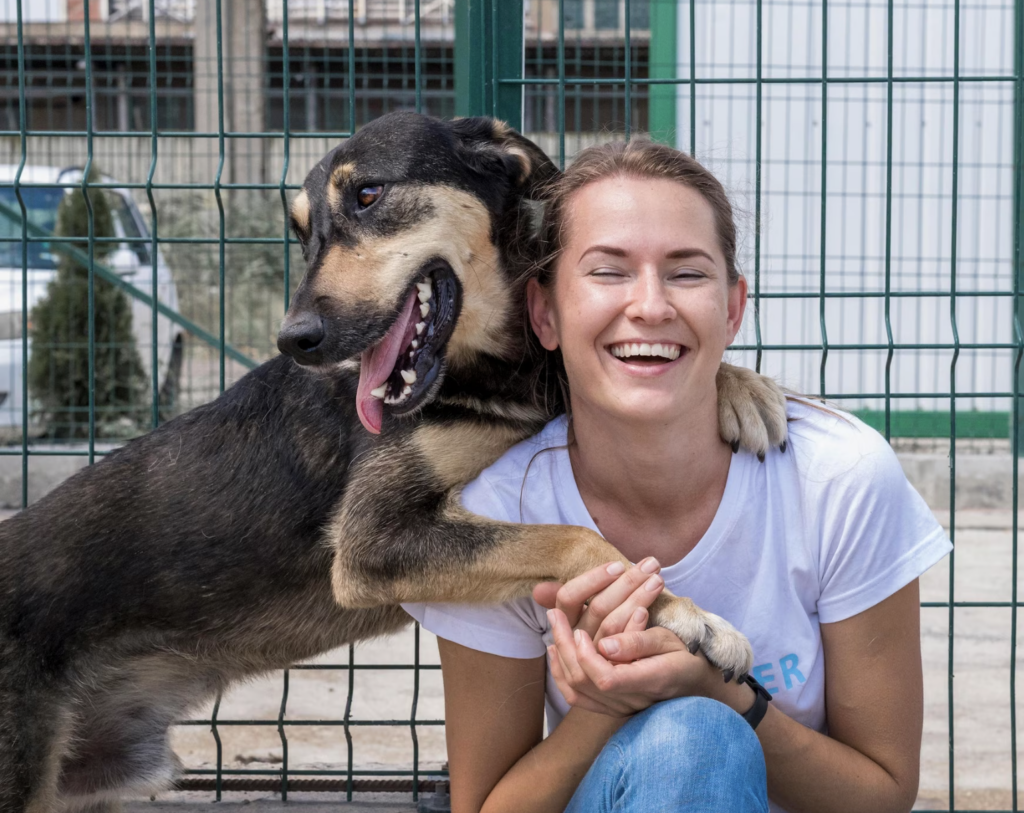
Animal Volunteering: Enriching Lives
Animal volunteering is a noble endeavor that involves dedicating one’s time and efforts to help animals in need. It encompasses a wide range of activities aimed at improving animal welfare, conservation, and protection. Whether it’s assisting at animal shelters, participating in wildlife conservation projects, or volunteering at farm animal sanctuaries, animal volunteering provides an opportunity to make a meaningful impact on the lives of animals.
The importance of animal volunteering cannot be overstated. It not only addresses the immediate needs of animals but also contributes to broader issues such as animal rights advocacy, environmental sustainability, and the cultivation of empathy and compassion within society. By volunteering, individuals become advocates for animals, raising awareness about their needs and promoting responsible and ethical treatment.
The purpose of this article is to explore the benefits and opportunities that animal volunteering offers. By examining the positive impact on individuals, communities, and animals themselves, we aim to inspire readers to get involved in this rewarding endeavor. Throughout the article, we will discuss the various types of animal volunteering opportunities available and provide practical guidance on how to get started.
Ultimately, the goal of this article is to highlight the transformative power of animal volunteering, both for the animals it supports and for the individuals who engage in it. By actively participating in animal volunteering, readers can contribute to a more compassionate and harmonious relationship between humans and animals, making a lasting difference in the lives of those in need.
Benefits of Animal Volunteering
Engaging in animal volunteering goes beyond the act of lending a helping hand to animals in need. It offers a plethora of personal and social benefits that can significantly enrich the lives of volunteers. In this section, we will explore the various advantages that come with dedicating time and effort to animal volunteering.
Personal benefits:
- Emotional satisfaction and fulfillment: Volunteering with animals brings a profound sense of satisfaction and fulfillment as volunteers witness the positive impact they make on the lives of animals in need. Knowing that their efforts contribute to their well-being and rehabilitation can bring immeasurable joy and a sense of purpose;
- Development of empathy and compassion: Working closely with animals cultivates empathy and compassion. Volunteers gain a deeper understanding of animals’ emotions, vulnerabilities, and challenges, fostering a greater appreciation for their well-being. This empathy extends beyond animals and influences how volunteers interact with other people, promoting a more compassionate and understanding society;
- Enhanced mental well-being and stress reduction: Interacting with animals has therapeutic benefits for mental health. Volunteering provides a respite from daily stressors and has been linked to reduced anxiety, improved mood, and overall well-being. The bond formed with animals can alleviate feelings of loneliness and isolation, enhancing mental and emotional resilience.
Social benefits:
- Building connections and forming friendships: Animal volunteering creates opportunities to connect with like-minded individuals who share a passion for animal welfare. Working together towards a common cause fosters strong bonds and often leads to the formation of lifelong friendships. The shared experiences and values create a supportive network within the volunteer community;
- Joining a community of like-minded individuals: Animal volunteering opens doors to a vibrant community dedicated to animal welfare and conservation. Engaging with this community allows volunteers to exchange knowledge, ideas, and experiences. It provides a platform for mentorship, learning, and personal growth in understanding animal-related issues;
- Opportunities for networking and career development: Animal volunteering can serve as a valuable platform for networking and career development. Volunteers have the opportunity to connect with professionals and organizations in the field, gaining insights into potential career paths and expanding their professional network. The practical skills and experience gained through volunteering can be valuable assets for future employment or educational opportunities.
In summary, animal volunteering offers a range of personal and social benefits. From emotional satisfaction and the development of empathy to enhanced mental well-being and stress reduction, volunteers experience a sense of fulfillment and purpose.
They also have the opportunity to build connections, form friendships, join a passionate community, and explore career possibilities. Engaging in animal volunteering not only impacts the lives of animals but also enhances the well-being and sense of belonging for those who dedicate their time and efforts.
Types of Animal Volunteering Opportunities

Animal volunteering offers a diverse array of opportunities for individuals looking to make a difference in the lives of animals. Whether you have a passion for companion animals, wildlife conservation, or farm animal welfare, there are various avenues through which you can contribute your time and skills.
In this section, we will explore the different types of animal volunteering opportunities available and the specific roles they entail.
Animal Shelters and Rescue Organizations
Animal shelters and rescue organizations serve as safe havens for animals in need, providing them with shelter, care, and an opportunity for a new life. Volunteering at these organizations offers a hands-on experience with a wide range of animals and a chance to make a positive impact. Here are some common ways to get involved:
- Assisting with animal care and feeding: Animal shelters rely on dedicated volunteers to ensure the well-being of the animals under their care. Tasks may include providing food and water, cleaning enclosures, and administering medication. By helping with daily care routines, volunteers play a crucial role in maintaining the health and happiness of shelter animals;
- Helping with adoption events and fundraising: Animal shelters often organize adoption events to find loving homes for their animals. Volunteers can assist by showcasing the animals, interacting with potential adopters, and providing information about responsible pet ownership. Additionally, volunteers can contribute to fundraising efforts by organizing events, creating awareness campaigns, or seeking donations to support the shelter’s operations;
- Fostering animals in need: Fostering involves temporarily providing a home for animals that are not ready for adoption or require special care. Volunteers who open their hearts and homes to foster animals play a vital role in helping them recover from illness or trauma, socializing them, and preparing them for adoption. Fostering is a rewarding experience that allows volunteers to make a significant impact on an individual animal’s life.
Wildlife Conservation and Rehabilitation Centers
Wildlife conservation and rehabilitation centers focus on the protection, preservation, and rehabilitation of native wildlife species. These centers provide a crucial lifeline for injured, orphaned, or endangered animals. Here are some ways to contribute as a volunteer:
- Supporting conservation efforts through research and fieldwork: Volunteers can assist in research projects focused on monitoring wildlife populations, studying behavior, or assessing the impact of conservation initiatives. This may involve data collection, field surveys, or habitat restoration activities. By participating in conservation research and fieldwork, volunteers contribute valuable insights to wildlife protection and management efforts;
- Assisting in animal rehabilitation and release programs: Wildlife rehabilitation centers provide care and medical treatment to injured or orphaned wildlife with the goal of returning them to their natural habitats. Volunteers can assist in feeding, cleaning enclosures, and providing enrichment activities for the animals. They may also help with the release process, ensuring that animals are reintroduced safely into the wild;
- Educating the public about wildlife conservation: Volunteers can play a crucial role in raising awareness about wildlife conservation through educational programs and public outreach. This may involve conducting guided tours, organizing workshops or presentations, or developing educational materials. By educating the public, volunteers help foster a greater understanding and appreciation for wildlife and their conservation needs.
Farm Animal Sanctuaries
Farm animal sanctuaries provide refuge and lifelong care for animals that have been rescued from the farming industry or other forms of exploitation. Volunteers at these sanctuaries contribute to the well-being of farm animals and promote compassionate living practices. Here are some ways to get involved:
- Providing care for rescued farm animals: Volunteers assist in the daily care of farm animals by feeding them, cleaning their living spaces, and ensuring they receive proper veterinary care. This includes tasks such as mucking out stables, providing fresh water and food, and monitoring the animals’ health and well-being;
- Participating in animal enrichment activities: Enrichment activities are designed to provide mental stimulation and promote natural behaviors in farm animals. Volunteers can contribute by creating and implementing enrichment programs, such as providing toys, puzzles, or creating engaging environments for the animals to explore;
- Assisting with farm maintenance and operations: Farm animal sanctuaries require ongoing maintenance and upkeep. Volunteers can help with various tasks, such as repairing fences, maintaining enclosures, gardening, or assisting with general farm operations. By providing support in these areas, volunteers contribute to the smooth running of the sanctuary and the overall well-being of the animals.
In conclusion, animal volunteering encompasses a wide range of opportunities that cater to different interests and passions. Whether you choose to work with animals in shelters, wildlife conservation centers, or farm sanctuaries, each type of volunteering offers a unique and fulfilling experience. By dedicating your time and skills to these causes, you have the chance to make a meaningful impact on the lives of animals and contribute to their well-being and conservation.
How to Get Involved in Animal Volunteering

Animal volunteering provides a rewarding opportunity to contribute to the welfare and conservation of animals. If you’re passionate about making a difference, here are some steps you can take to get involved in animal volunteering.
Research local animal organizations and initiatives:
Begin by researching animal organizations and initiatives in your local area. Look for shelters, rescue groups, wildlife rehabilitation centers, or farm animal sanctuaries. Explore their websites, social media pages, and local directories to gather information about their missions, activities, and volunteer opportunities. Take note of the organizations that align with your interests and values.
Contact organizations directly to inquire about volunteer opportunities:
Once you’ve identified potential organizations, reach out to them directly to inquire about volunteer opportunities. Contact their volunteer coordinators or designated points of contact through email or phone. Express your interest in volunteering and ask about the specific roles available. Provide any relevant information about your skills, experience, and availability.
Attend volunteer orientation sessions and training programs:
Many animal organizations conduct volunteer orientation sessions or training programs to familiarize volunteers with their operations, protocols, and animal care procedures. Attend these sessions to gain a comprehensive understanding of the organization’s mission, values, and expectations.
Training programs may cover topics such as animal handling, safety guidelines, and specific tasks relevant to the volunteer role. Embrace the learning opportunity and ensure you comply with any necessary certifications or background checks.
Commit to regular volunteering hours and responsibilities:
Commitment and consistency are essential in animal volunteering. Assess your availability and determine a schedule that you can dedicate to volunteering. Organizations often rely on volunteers to fill specific shifts or perform regular duties.
Be prepared to commit to the agreed-upon hours and fulfill the responsibilities assigned to you. This may involve tasks such as animal care, administrative support, event coordination, or fundraising efforts. By maintaining regular volunteering hours, you contribute to the stability and effectiveness of the organization.
Conclusion
Remember, the purpose of animal volunteering is to make a positive impact on the lives of animals and support their welfare. Approach your volunteering experience with enthusiasm, dedication, and a genuine passion for animals. By actively engaging in the volunteer community, you will not only make a difference but also have the opportunity to learn, grow, and develop valuable connections with like-minded individuals.
Take the first step today and embark on an enriching journey of animal volunteering. Your efforts can help improve the lives of animals, promote their conservation, and inspire others to join the cause.
FAQ
The age requirement to volunteer at an animal shelter in Arizona varies, but many shelters accept volunteers who are at least 16 years old, while some may have a minimum age requirement of 18 or older.
The NYC cuddler program is a volunteer program offered by certain animal shelters or rescue organizations in New York City. The program involves volunteers providing comforting and companionship to animals by spending time cuddling, playing, or socializing with them.
The age requirement to volunteer at an animal shelter in Maryland varies among different shelters. Generally, many shelters accept volunteers who are at least 16 years old, but some may have a minimum age requirement of 18 or older.
Yes, PETA (People for the Ethical Treatment of Animals) does have volunteers. PETA offers various volunteer opportunities for individuals who are passionate about animal rights and welfare. Volunteers can assist with campaigns, events, outreach efforts, or contribute their skills in areas such as graphic design or writing.